Neuschwanstein was King Ludwig II’s unfinished dream and the crown jewel of his legacy. The walls, painted from floor to ceiling with scenes from legends and tales, make you feel like you are walking through a life-sized storybook. The exterior view is equally fantastic—no wonder this was the model for Disney’s Sleeping Beauty Castle.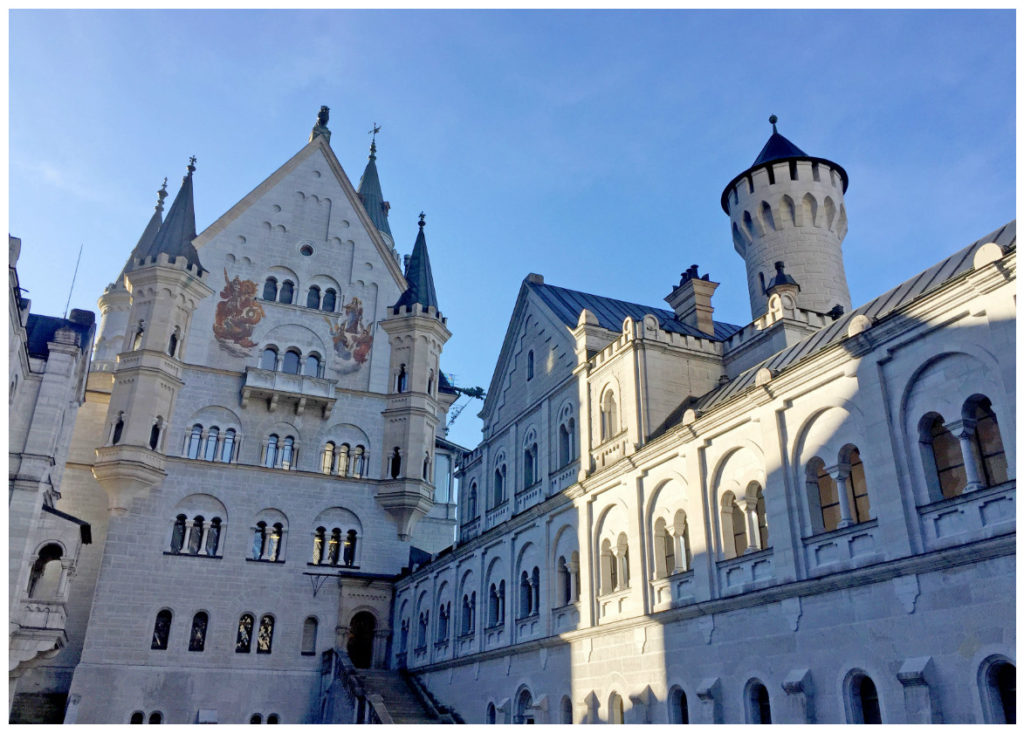
Ludwig preferred creating his own reality than living in the one he was born into. Whereas Linderhof Palace was an homage to the French King Louis XIV, Neuschwanstein was to be a picturesque refuge where Ludwig could immerse himself in romantic conceits like divine right, the medieval culture of knighthood, and his favorite operas of Richard Wagner.
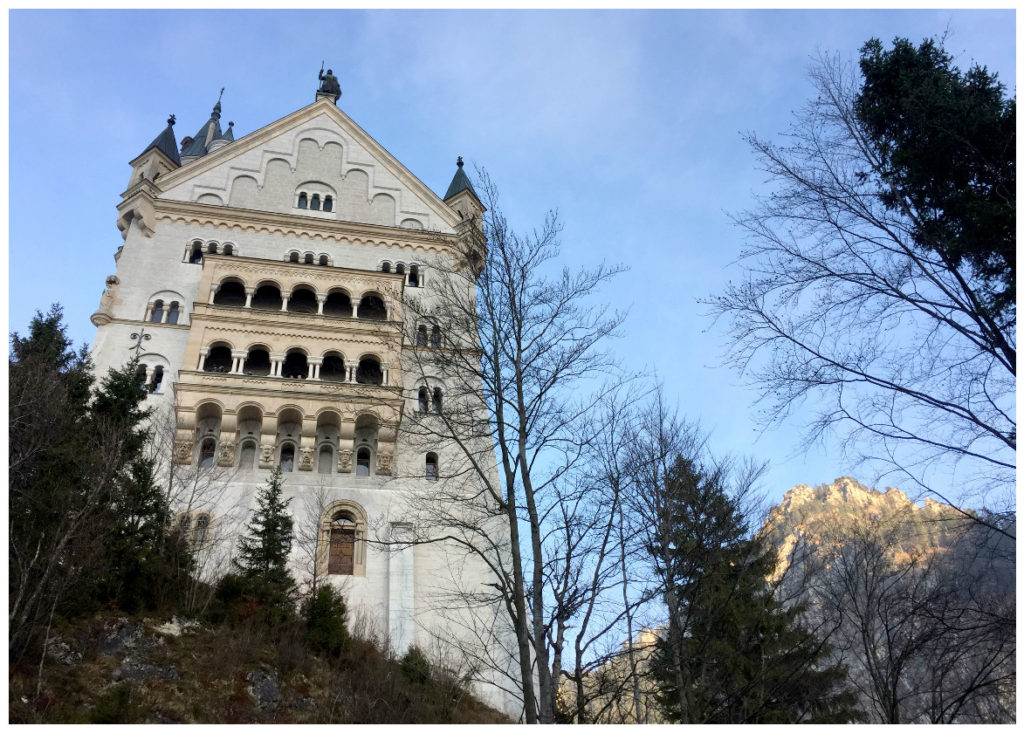
As if seeing the castle wasn’t magical enough, a wintry frost was sprinkling down. With the sun, the flakes sorta melted and it LITERALLY glittered on us. Click here for video, in slomo.
No pictures were allowed on our tour of the inside, but someone named Joseph Albert made these lovely photochrome prints for postcards published between 1890 and 1900 that I’ve used for visual reference.
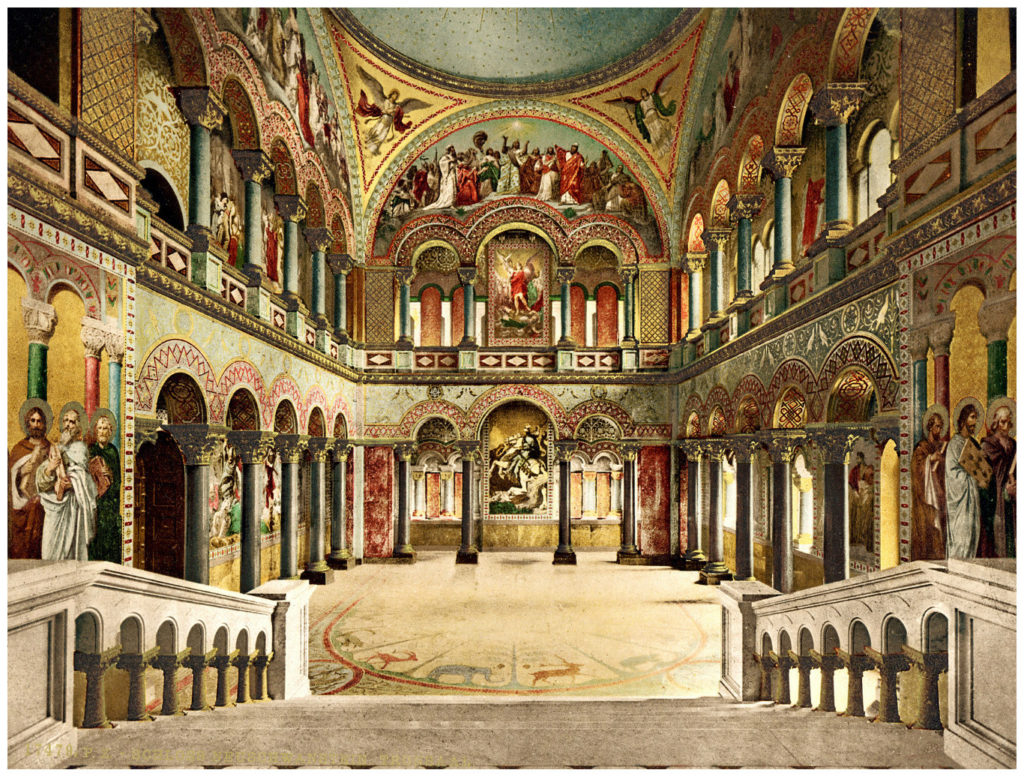
His throne hall, with its Byzantine style, celebrates him as ruler by divine right—in other words, that his power and authority as King stems from God’s will. The chandelier looks like a giant crown for the room that celebrates him, as he is between the heavens (painted on the ceiling) and the earth (all earth’s beings portrayed in a beautifully detailed mosaic).

King Ludwig’s bedroom, decorated with scenes from Wagner’s Tristan & Isolde, depicts a tragic and intense love story. His intricately carved wood bed canopy took 6 skilled craftsmen 4 years to build in the room. It’s hard to tell, but the carvings are just as intricate from the side edge of the bed all the way to the wall. Not visible is a sink basin with the faucet in the shape of a swan’s head/neck. Spring water from the mountains would come out of the swan’s mouth when the king used it.

Ludwig had a particular fondness for swans; another of his nicknames is “The Swan King.” The swan is a symbol of purity and is on the Schwangau area coat of arms. It’s also connected with the story of Lohengrin, the Swan Knight who rescues a princess by swan boat. It’s a motif present all over the castle, from porcelain statues, to furniture embroidering, carpeting, and more.
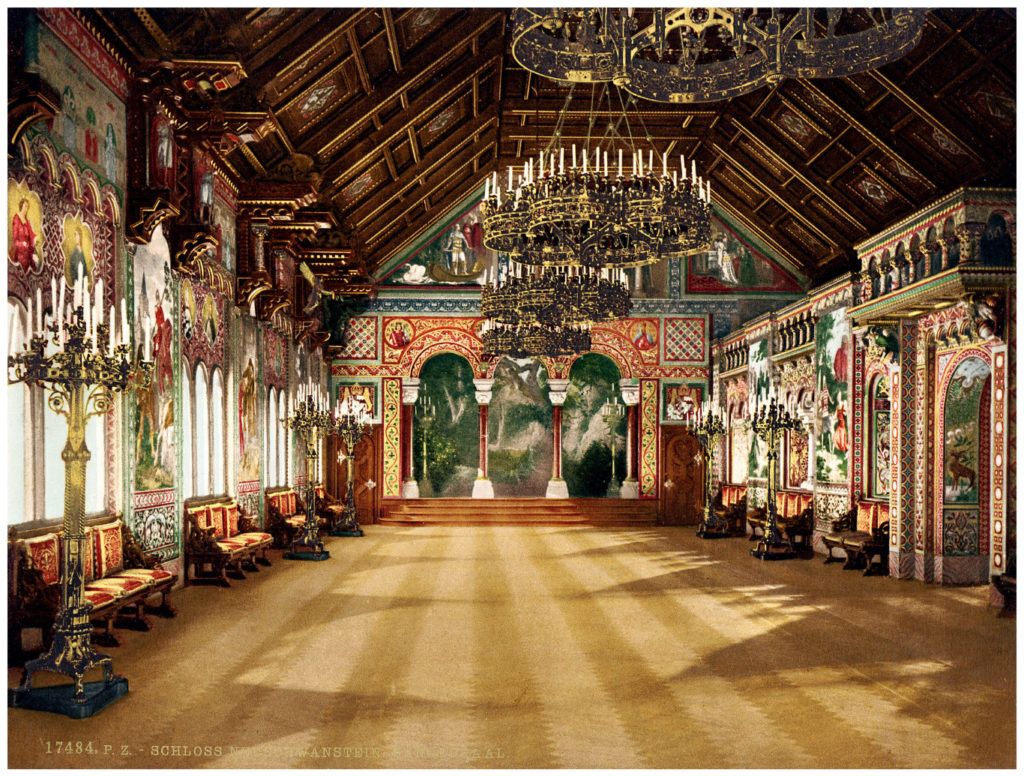
The Singers’ Hall is painted with forest scenery to create the setting for the story of Parzival and the holy grail. The windows, in sets of 3 on each side, show the real forest and mountain scenery surrounding the castle, making for lovely marriage of art and reality. You can see the crown-like chandeliers in this room.
For more photos and a virtual tour, check out the Neuschwanstein official website (I highly recommend it!).
Believe it or not, Neuschwanstein remains unfinished. With such lavish spending on his palaces, running out of funds, and plans on starting yet another palace, King Ludwig II was declared mentally unfit to rule. He was removed from power and the very next day was found in Lake Starnberg with his psychiatrist, both mysteriously dead. Building on Neuschwanstein and his other unfinished work, Herrenchiemsee Palace stopped immediately (Herrenchiemsee was more expensive than Neuschwanstein and Linderhof combined!).
Though his spending was cause for his removal from power and diagnosis as “mad,” it’s now made for one of the most popular castles in the world! Within two months of King Ludwig II’s death, tourists were visiting his most private and lavish refuges.
Neuschwanstein’s completion, like Ludwig’s life, was cut short. But even in its partially built state is the epitome of a Romantic castle.
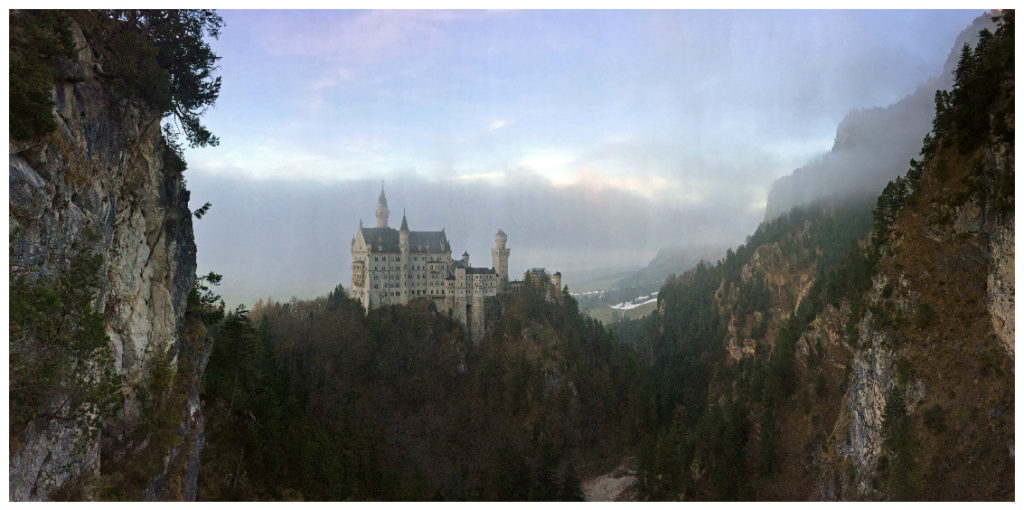
If you’re planning your fairy tale castle visit of Neuschwanstein, check my step-by-step guide on How to Visit Neuschwanstein.
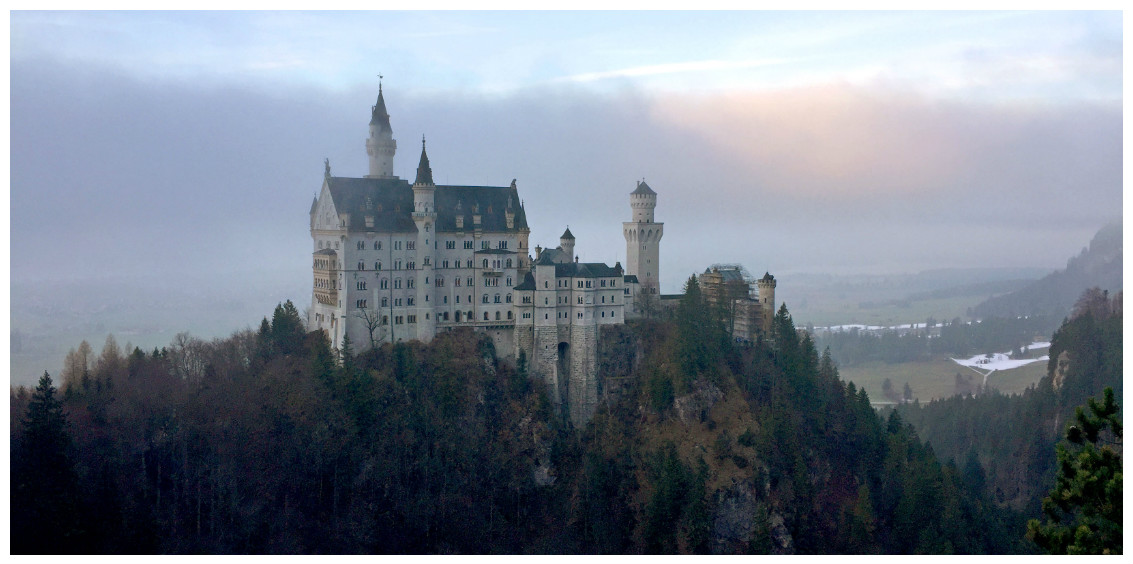
So sad for His Highness but what a legacy to see by the masses, despite incompletion!
[…] other palaces or castles, but the intricacies are richer than most anything I’ve seen (see Schloss Neuschwanstein for more/similarly jaw-dropping scenes). Once you enter, the 4 main rooms of the palace are on the […]